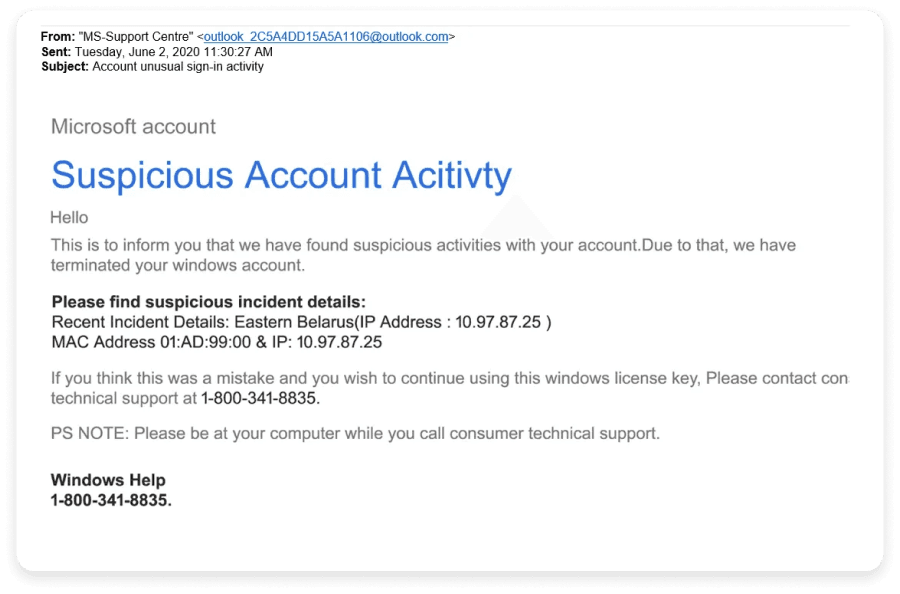According to Statista, nearly half of the emails sent worldwide are spam. You might have come across these spam messages from unknown senders that are unsolicited. These types of emails can actually be harmful as they can lead to information leaks, system hacking and financial losses.
This guide covers all your questions about spam emails and how you can report and prevent them to finally get rid of them for good.
What is a spam email?
A spam email refers to unsolicited, often commercial, messages sent in bulk to a large number of recipients. These messages are usually part of a broader marketing strategy aimed at promoting various products or services.
Why do people send spam emails?
Spam emails are very commonly used for various malicious reasons, including hacking into your system, scamming or luring you to send confidential information, etc. Unsolicited commercial emails, commonly known as spam, continue to be utilized by numerous businesses despite ethical concerns, most of them being financial motives. The minimal cost per email enables mass distribution at a consistent rate.
However, it is important to note that spam can also serve as a means for malicious actors to infiltrate your computer system so it's always a good idea to look out for these types of emails on the internet.
Types of spam emails
There are various types of unwanted emails that individuals might encounter in their inboxes. Some of the common types of spam emails include:
1. Promotional spam email
These emails contain unsolicited advertisements for products or services, often from unknown or untrustworthy sources. The message body may promote anything from fake products to dubious investment opportunities.

Source: Hooksecurity
2. Phishing email
Phishing emails appear to be from legitimate sources, such as banks or real companies and aim to trick recipients into revealing sensitive information, such as login credentials, passwords, credit card numbers, or personal details.

3. Spoofed spam email
Email spoofing is a type of cyber-attack where the attacker forges an email header to make it appear that the email originated from a different source than the actual sender. As you can see in the image below, the sender cleverly used small case L instead of i to make it seem like the original email address. If the receiver does not pay close attention, they might not be able to identify if it is a false claim.

4. Reward-based spam email
These emails typically claim that the recipient has won a lottery or is eligible for a substantial financial reward. However, the recipient must pay an advance fee or provide personal information to claim the prize, which leads to financial losses or identity theft.

Source: Hooksecurity
💡 Related guide: 23 Email Spam Statistics to Know in 2023
5. Phony subscription spam email
These emails might claim that the recipient has subscribed to a service and needs to pay or provide personal information to cancel the subscription, even if the recipient has never signed up for such a service.

Source: Apple
6. Suspicious activity emails
This type of spam email urges users to click on the malicious link without thinking as it focuses on security and privacy issues, so most people click on it because they are more focused on the point that there has been suspicious activity and are absorbed by it. Also, they are less likely to doubt something that is warning them about a danger.

Source: Stanford
How do spammers get into your inbox?
Spammers often use automated software programs, commonly known as "spambots," to harvest email addresses. These bots act as zombies that can be controlled remotely by the spammer.
Another way is by purchasing email lists. Spammers may purchase or compile large email lists, often obtained through illegal means or harvested from websites and online forums. These lists contain thousands or even millions of email addresses, which the spammers use to distribute their unsolicited email messages.
How dangerous can spam emails be?
Spam emails can be highly damaging, posing significant personal and professional security risks. They often facilitate phishing scams, where fraudulent emails impersonate reputable entities, leading users to disclose sensitive information that can result in identity theft and financial losses. Moreover, spams frequently serve as carriers of malware, including viruses and ransomware, which can compromise data integrity and disrupt system functionality. Utilizing a VPN can obfuscate your online activities, making it more challenging for these malicious emails to target you effectively, which is why using a VPN can be a crucial step in enhancing your cybersecurity.
Furthermore, if your email address is exploited to send spam, it can tarnish your reputation, leading to distrust and potentially damaging your professional relationships.
💡 Related guide: 9 Email Spam Reasons And How To Avoid It
How to prevent spam emails
Preventing spam email is essential to maintain the security of your inbox and protect your personal information. Here are some tips to help you minimize the risk of receiving spam:

How to report spam emails
Most email clients make it easy for you to report any type of spam email. Here are the steps to report spam emails on various email clients like Apple Mail, Google and Outlook:
How to report spam emails on Apple Mail
To mark an email as spam on Apple Mail, follow these steps:

- Select the spam email by clicking on it.
- At the top of the Mail window, you'll find a toolbar. Click on the "Move to" button.
- Choose the "Junk" option from the dropdown menu.
This action will move the selected email to the Junk mailbox. Apple Mail uses this information to improve its filters and block similar emails in the future.
How to report spam emails on Gmail

Source: Google
To mark an email as spam on Gmail, follow these steps:
- Select the spam email by clicking on the checkbox next to it.
- At the top of the page, you'll find a toolbar. Click on the "Report Spam" button (it looks like an exclamation mark inside a stop sign).
This action will move the selected email to the spam folder and alert Google's spam filters to help prevent similar emails from reaching your inbox in the future.
How to report spam emails on Outlook
To mark an email as junk on Outlook, follow these steps:

- Select the spam mail by clicking on the checkbox next to it.
- At the top of the page, you'll find a toolbar. Click on the "Junk" option in the toolbar.
This action will move the selected email to the Junk Email folder and alert Outlook's spam filters to help prevent similar emails from reaching your inbox in the future.
💡 Related guide: 5 Ways to Set Up Outlook Email Automation With Steps
Final takeaway
Spam emails are very common, and they come in various forms that aim to tempt you into engaging with harmful content. It is essential to employ a spam filter and exercise caution when considering clicking on links in emails, as they can result in data breaches, financial harm, and even damage your reputation. Furthermore, it's important to be aware of techniques for recognizing spam emails and reporting them.









